Your firm’s biggest growth blocker might be the face you see in the mirror every morning. That is harsh, yet many accounting founders discover the same pattern: the very habits that built the practice now slow it down. Richard Hagberg and Tien Tzuo (the founder of Zuora, pioneer of the subscription economy, and one of our investors) call this the Founder’s Paradox, and modern proposal software for accountants is one of the quickest ways to break it.
“Every founder is a time bomb waiting to explode. The same personal attributes a founder needs to launch a business will invariably blow it up. Successful founders learn how to defuse their worst impulses and build durable companies. But most don’t.”
In other words, the traits that made you a successful solo practitioner or small firm founder (heroic hustle, perfectionism, total control) later can literally destroy it. In the accounting and professional‑services worlds where accuracy is life‑or‑death, the temptation to stay in every detail is multiplied.
Table of contents
- Introduction
- Why founder-led firms hit a growth ceiling
- Classic bottleneck behaviors
- Hidden costs of doing it all
- Overcoming the Founder's Paradox
- Defusing the paradox with proposal software for accountants\
- How proposal software for accountants removes each bottleneck
- Key takeaways
- Ready to watch proposals turn into paid work
- FAQ
Why founder-led firms hit a growth ceiling
Founders begin as spark-plugs: they spot a need, move fast, and rely on sheer force of will. In a five-client firm that works, in a fifty-client firm, it frays. Here’s the typical arc
- Launch (year 0-1)
- Founder works 24/7, makes every decision, and delights the first handful of clients through personal heroics.
- Immediate upside: lightning-fast responses and airtight quality.
- Seed of trouble: the business becomes inseparable from one person’s brain and schedule.
- Founder works 24/7, makes every decision, and delights the first handful of clients through personal heroics.
- Early growth (year 1-3)
- Headcount creeps past three or four; the founder still drafts every proposal, fixes every reconciliation error, and double-checks each tax return.
- Immediate upside: quality control feels rock-solid.
- Cracks form: team members wait for approvals, momentum slows, and the founder’s evenings vanish.
- Headcount creeps past three or four; the founder still drafts every proposal, fixes every reconciliation error, and double-checks each tax return.
- Scale attempt (year 3-6)
- Ten or more employees are onboard, but every workflow still routes through the founder’s inbox.
- Immediate upside: brand reputation remains strong because nothing goes out “wrong.”
- Fallout: proposals stall, invoices go out late, staff morale dips, and revenue plateaus because the firm can only move as fast as one overworked person.
- Ten or more employees are onboard, but every workflow still routes through the founder’s inbox.
- Plateau - or decline (year 6 +)
- The founder doubles down on control to “protect quality,” becoming rigid and isolated. Snap discount decisions or abrupt scope promises creep in as stress rises.
- Result: top talent leaves, prospects choose nimbler competitors, and the very habits that launched the firm now threaten its survival.
- The founder doubles down on control to “protect quality,” becoming rigid and isolated. Snap discount decisions or abrupt scope promises creep in as stress rises.
Data backs it up: founders who fail to delegate cap revenue at roughly 30% lower than peers who systematize early. These four phases show the classic curve of the founder’s paradox: strengths that fuel the early sprint gradually convert into anchors that halt forward motion unless the founder evolves.
Classic bottleneck behaviors
When founder habits stay frozen in “launch mode,” four tell-tale patterns surface again and again. These are patterns we see in almost every plateaued founder‑led firm - reliable red flags that it is time to change course.
- Control overload. Nothing leaves without your sign-off. Team members wait, projects idle, and you accidentally train staff to stay passive.
- Manual processes. Word proposals, PDF invoices, and spreadsheet trackers feel safe, yet 97% of firms admit they under-use tech.
- “I’ll just do it myself.” Delegation feels risky, so you rewrite staff work instead of coaching. Morale slides and top talent quietly job-hunt.
- Revenue leakage. 42% of companies lose 1–5% of earnings through unbilled or unpaid work.
The hidden costs of doing it all (a quick reality check)
It’s worth tallying up what the founder-is-bottleneck approach might be costing your firm:
- Delayed deals and lost clients: Slow proposal turnarounds give agile competitors an opening to swoop in. A proposal that takes weeks instead of hours can be a deal-breaker.
- Stretched staff & burnout: When everything flows through the founder, employees sit idle waiting for approvals, or get overloaded doing duplicate work. Morale and productivity suffer.
- Cash flow crunches: Late invoices and irregular follow-ups (because you’re busy elsewhere) lead to more late payments. This turns into higher days sales outstanding and unpredictable cash flow, making it harder to plan or invest in growth. 82% of business failures are due to poor cash‑flow control.
- Stunted innovation: If you’re too deep in the weeds, you’re not spending time on strategy, training, or new service lines. The firm’s evolution stalls because its leader is stuck firefighting daily tasks.
The takeaway is clear: what got you here won’t get you there. To break through the growth ceiling, something must change in how the firm operates – and that usually starts with the founder’s willingness to embrace new ways.
Overcoming the Founder's Paradox
First come mindset shifts. Begin with the personal work - task logs, coach-mode meetings, permission levels, and quarterly 360 feedback.
- Self-awareness. Keep a one-week activity log. Highlight tasks only you can legally do (signing tax returns), versus tasks you simply like doing. Everything in the second column is a future delegation candidate.
- Adaptability. Adopt “coach mode” meetings: once a week, your role is questions, not answers. Ask What’s blocking you?, How would you solve it? Your team builds judgment while you learn to let go.
- Team empowerment. Create “permission levels.” Example: any proposal under $15 000 can be sent without partner sign-off. Staff feel trusted, clients get faster responses.
- Embrace feedback. Schedule quarterly 360s - including junior accountants - so dissenting opinions surface before they become hidden landmines. Harvard Business Review notes leaders who seek negative feedback improve twice as fast.
Mindset helps, but systems make change stick. That is where modern proposal technology shines.
Defusing the paradox with a proposal software for accountants
So, how do you defuse the founder’s paradox before it “blows up” your business? A big part of the answer lies in working smarter, not harder, and leveraging technology to do so.
Systematization over heroics
Heroic effort scales linearly. Systems scale exponentially, and proposal software is the backbone.
- Speed and scalability. Templates, price libraries, and e-signatures cut proposal cycles from two weeks to under 24 hours. E-sign alone drops turnaround 50%.
- Built-in compliance. Engagement clauses auto-populate, so nothing critical is missed.
- Automatic follow-ups. The platform tracks opens and nudges politely; your pipeline keeps moving.
- Proposal-to-payment flow. In Anchor, a signed proposal spawns invoices, charges clients’ ACH or card, and syncs to your ledger - no re-keying.
- Data for smarter decisions. Dashboards surface win rates, cash forecasts, and scope-creep alerts. Tech-enabled firms handle 38% more work with the same staff.
“Payments land like clockwork, and I never chase an invoice now.” - Owner, eCommerce tax practice
Wins you notice fast
- Proposals go out same day
- Invoices create themselves
- Cash hits the bank on schedule
- Scope changes billed instantly
- Founder regains evenings
How proposal software for accountants removes each bottleneck
One of the most high-impact changes a growing firm can make is implementing proposal software for accountants as the cornerstone of an automated, end-to-end client engagement process.
- Rapid, template-driven onboarding. Any solid proposal software for accountants replaces ad-hoc Word docs with branded templates and e-signatures so proposals go out in minutes, not days.
- With Anchor: Interactive Proposals let your team click-assemble engagement letters, send them from any device, and get a legally binding signature in under 24 hours. See how it works.
- With Anchor: Interactive Proposals let your team click-assemble engagement letters, send them from any device, and get a legally binding signature in under 24 hours. See how it works.
- Built-in consistency and compliance. Good platforms enforce standardized scope language and required clauses, ensuring every proposal meets firm and regulatory rules - no founder spot-checks needed.
- With Anchor: Each template pulls pre-approved service blocks and pricing, locking accuracy at the source and guaranteeing that what the client signs is exactly what gets billed.
- Automatic reminders that keep deals alive. Leading proposal software for accountants tracks opens and sends polite nudges, so unsigned proposals don’t die in a prospect’s inbox.
- With Anchor: Smart follow-ups trigger at intervals you set, or ping the assigned staffer to call, meaning the pipeline moves even when the founder’s offline.
- Seamless proposal-to-payment hand-off. Top solutions capture payment details at acceptance and auto-generate invoices, shutting down revenue leakage.
- With Anchor: Once the proposal is signed, Automagically Invoiced schedules every charge, then Reliable Reconciliation posts payments straight into QuickBooks or Xero - no duplicate entry, zero chasing.
- With Anchor: Once the proposal is signed, Automagically Invoiced schedules every charge, then Reliable Reconciliation posts payments straight into QuickBooks or Xero - no duplicate entry, zero chasing.
- Real-time visibility that informs strategy. Quality proposal software for accountants offers dashboards showing win rates and projected cash so leaders can act on data, not hunches.
- With Anchor: Confident Cash Flow charts locked-in revenue, upcoming invoices, and any failed payments - firm founders see exactly what’s coming and can scale without fear.
- With Anchor: Confident Cash Flow charts locked-in revenue, upcoming invoices, and any failed payments - firm founders see exactly what’s coming and can scale without fear.
Key takeaways
- Founder habits that championed early success can strangle growth.
- Manual proposals and billing amplify bottlenecks, leak revenue, and drain morale.
- Proposal software for accountants removes friction, enforces quality, and automates cash collection.
- Systems plus delegation turn founders from doers into strategic leaders.
- Growth follows when the firm runs on repeatable processes rather than heroic intervention.
Ready to watch proposals turn into paid work while you focus on strategy?
Open a free Anchor account in minutes. Prefer a personal walkthrough? Book a 30-minute demo. Experience financial certainty, effortless cash flow, and total control without staying up past midnight.
FAQ
Q: What exactly is proposal software for accountants?
A: It is a platform that links proposals, engagement letters, e-signatures, invoicing, and payments into one seamless flow designed for accounting services.
Q: Will automation remove my personal touch?
A: No. Automation handles the routine mechanics so you can spend more time advising clients face-to-face.
Q: Do clients resist adding payment info at signature?
A: Most appreciate the convenience of automatic billing and the transparency of knowing charges in advance.
Q: How long does the Anchor implementation take?
A: Many practices send their first interactive proposal within the afternoon of signing up.
Q: Is this expensive for my firm?
A: Anchor charges a flat five dollars per transaction with free ACH, so every firm sees a quick positive return.








